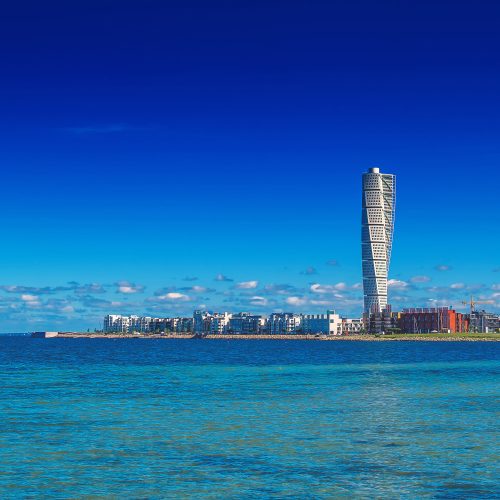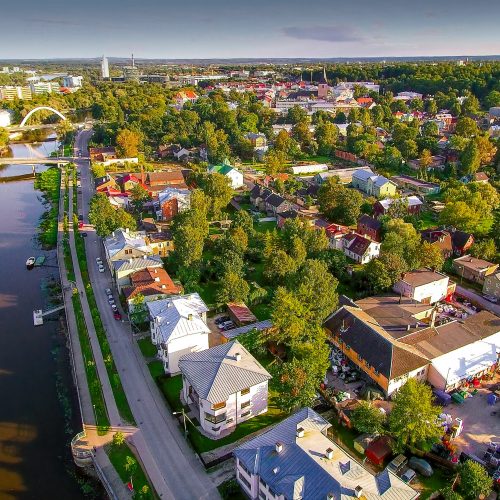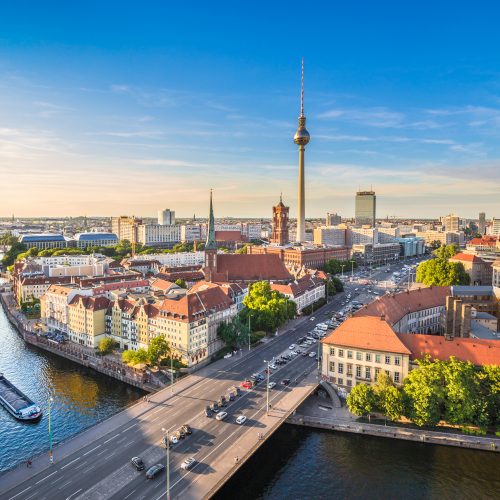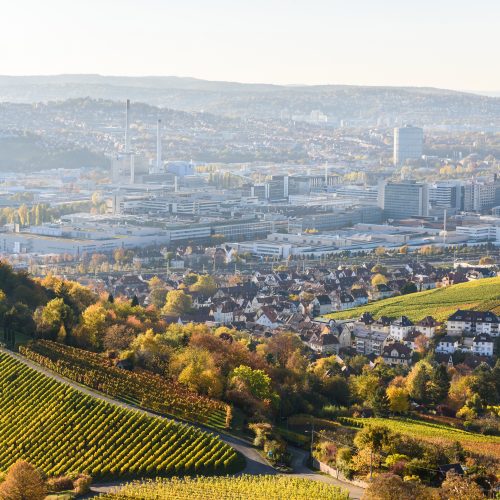Context and policy overview
Tartu’s khrushchyovkas (panel buildings built in the 1950s) have long outlived their purpose and become a source of high energy consumption in the housing sector. Renovating the structure of obsolete apartments is often costly, however, and does not fundamentally improve residents’ living conditions. To provide dwellers with modern and energy-efficient dwellings, Tartu needs an initiative that combines technology with retrofitting.[1]
To this end, in 2019, Tartu began to transform the khrushchyovkas into smart apartments, equipping them with systems that would allow residents to reduce their energy use. It first retrofitted the buildings’ structure, then introduced a smart home system of sensors and meters to monitor their energy efficiency. The data are shared between different stakeholders to improve energy use.
The city’s smart building initiative is still a small-scale project and tangible results remain to be seen. In the long run, it aims to reduce energy consumption in the pilot buildings to almost zero, achieving an A energy-efficiency rating.[2]
Implementation
There are two stages to Tartu’s smart building project: (1) retrofitting and (2) the adoption of a smart home system. The project is overseen by the Tartu Regional Energy Agency (TREA) and is being conducted in a pilot neighbourhood, largely comprising old khrushchyovkas. The project is currently being conducted in 17 buildings.
Stage 1: Retrofitting
This stage of the project does not have digital elements to it, focusing solely on the rudimentary renovation of the buildings in question. It aims to reduce energy consumption from 270 kWh/m2 per year to 90 kWh/m2 a year.[3]
The measures rolled out so far include:[4]
- improving buildings’ thermal insulation by insulating walls, triple-glazing windows and refurbishing roofs
- reducing heat loss by replacing front doors
- installing ventilation systems with heat exchangers
- installing 400-500 kWp photovoltaic (PV) panels that generate clean energy.
Stage 2: The smart home system
Tartu has installed a smart home system in every apartment in the pilot area. The system consists of one or several gateways, a control panel and a vast array of sensors and meters. Different devices serve different purposes:[5]
- The gateway is the communication centre connected to all the devices installed in the apartments.
- The control panel is the computer controlling all the devices and operating apps connected to the smart home system.
- Smart devices installed in the apartments include a smoke detector, an impulse counter (which displays data on electricity and transmits energy consumption), smart thermostats, smart water and gas meters and a CO2
The central heating system in the pilot apartments is also being revamped. The new system is connected to a district cooling system that uses residual heat and PV panel-generated electricity to heat or cool outside air coming into the apartments.[6] Residents can easily adjust the indoor temperature using a thermostat.[7] Smart devices monitor the energy efficiency of heating systems.[8]
The smart home system is connected to a cloud platform that allows stakeholders, including residents, housing associations, the University of Tartu and the TREA to access and exchange data.[9] It is hoped that the data will empower residents to lead a greener lifestyle and help the city agency make more informed decisions. It will be used to calibrate the heating and ventilation systems automatically. Also, the data could provide insights into residents’ consumption patterns and allow the city agency to draw up customised energy-saving plans. Lastly, the data are open to third parties, such as small and medium-sized enterprises and start-ups, to inform the development of innovative services.[10]
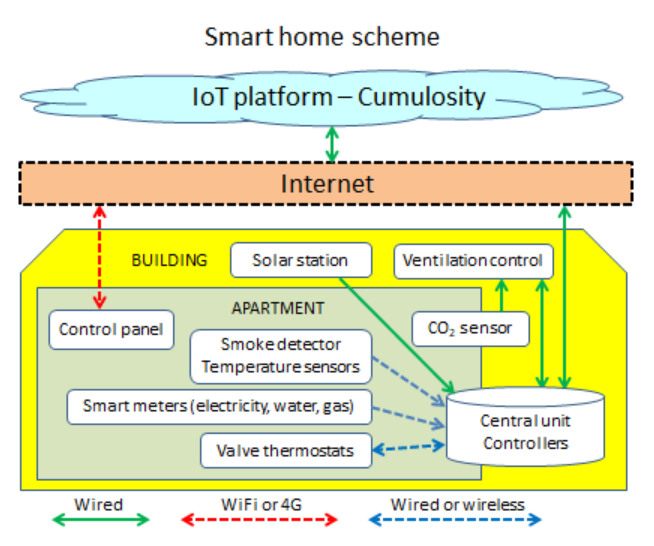
Figure 1. Smart home solution Source: SmartEnCity (2021)
The city granted the smart home procurement contract to Telia Estonia, a leading telecoms company that operates the country’s e-government services. Telia is responsible for facilitating the data exchange across all systems in the buildings and ensuring robust connectivity.
Barriers and critical success factors
- Citizen engagement
Persuading citizens to agree to the smart home system was the first step. Although it is still early days in terms of smart home system implementation, it has already raised privacy and health issues. Residents in Tartu’s pilot neighbourhood have expressed concerns about security and health hazards, such as radiofrequency radiation.
In Tartu, buildings are managed by a housing association made up of property owners. The association selects a representative to make decisions on behalf of all members. To address residents’ concerns, the city of Tartu continues to work with the housing associations and regularly responds to the public’s questions online.
The TREA worked closely with representatives to facilitate the decision-making process. It has rolled out a four-step plan to boost the uptake of the smart home system:[11]
Step 1: TREA officials visit the housing associations to explain the planned renovation process in detail and get feedback and suggestions.
Step 2: The TREA provides technical support to the associations to adjust renovation plans to owners’ needs.
Step 3: The TREA collaborates with the Institute of Baltic Studies and the University of Tartu to educate residents on how a smart home system will improve their quality of life.
Step 4: The TREA monitors the energy efficiency of the retrofitted buildings and suggests how residents can reduce consumption and costs.
The city also collaborated with local universities to organise workshops in which residents could participate. In 2021, residents also received manuals instructing them how to use the smart home system to monitor energy consumption and control heating and ventilation.
- Internet
When installing the smart home system, connectivity is an essential factor to consider. As data drive the system, it is crucial to ensure that a radio and cable network are in place to support data transmission.
- Financial implications
Funds from the European Union and the national government cover 70 per cent of retrofitting costs and property owners must cover the rest.[12] Government loans are provided to encourage uptake. The total cost of the smart retrofitting project is around €15.6 million;[13] installation of the smart home solution has cost about €400,000.[14] The city purchased the smart home system devices through a public procurement process. Although the supplier is responsible for installing and maintaining the system, residents will probably need to pay monthly service charges.[15] However, Tartu’s smart retrofitting project is heavily subsidised by the government, so incurs little cost to the property owners. Once the subsidies and loans end, there may be a significant drop in uptake.
Results and lessons learned
As of 2021, 17 khrushchyovkas in the pilot area had been renovated.[16] By integrating smart components into the old buildings, the city of Tartu expects to reduce energy consumption in the housing sector by 20 per cent.[17]As the process unfolds, the city plans to share the technical expertise and supportive policies cities need to promote smart buildings.
Cities interested in promoting smart buildings can learn from Tartu’s experience:
- Success in the smart building sector requires not only technical expertise, but also the participation of citizens.
- Collaborating with local associations facilitates communication with property owners.
- The adoption of the smart home system is an ongoing process. After installing the system, cities should provide continuous instruction to help residents use it.
- Subsidies are essential in the early stages of promotion. Moreover, it is important to find an alternative if cities intend to expand the scope of the plan.










